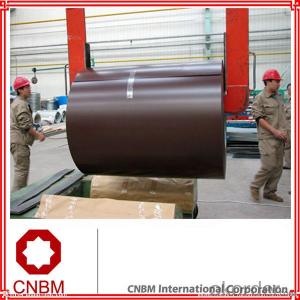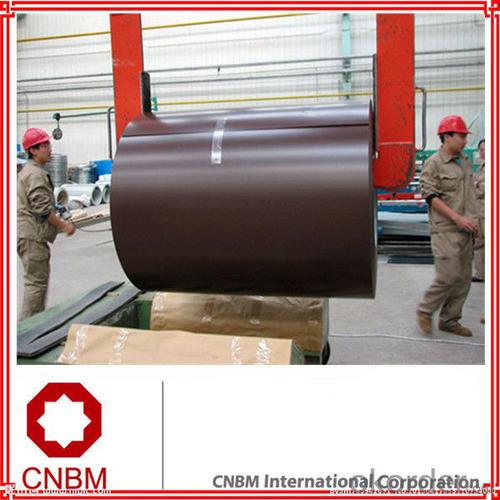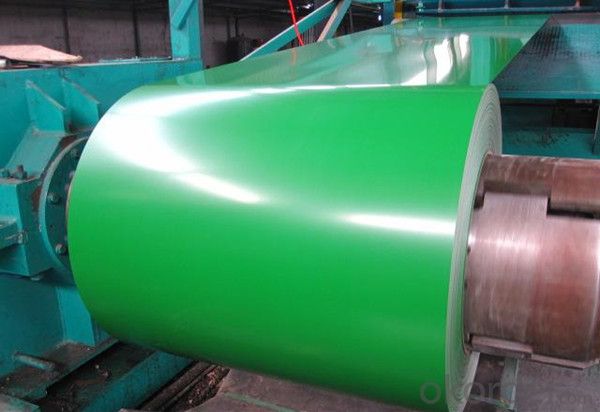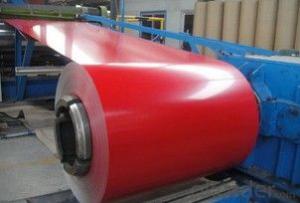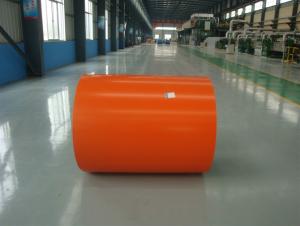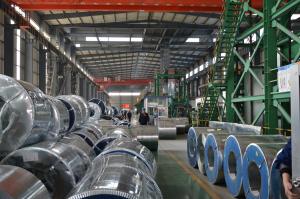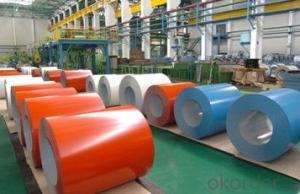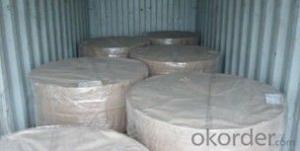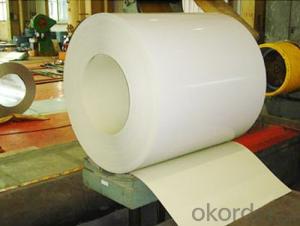Prepainted galvanized steel coil hot sale
- Loading Port:
- Tianjin
- Payment Terms:
- TT OR LC
- Min Order Qty:
- 25 m.t.
- Supply Capability:
- 33576 m.t./month
OKorder Service Pledge
OKorder Financial Service
You Might Also Like
Specification
Prepainted galvanized steel coil hot sale
The production process has evolved from one-coating-and-one-baking to double-coating-and-sigle-baking,double-coating-and
-double-baking and even three-coating-and-three-baking.
Main Features of the Pre-Painted Galvanized/Aluzinc Steel Coil:
• Excellent process capability
• Smooth and flat surface
• Workability, durability
• Excellent heat resistance performance
• High strength
• Good formability
• Good visual effect
Standard and Grade :
Pre-paint galvanized steel coil | ||||
ASTM A755M-03 | EN10169:2006 | JISG 3312-2012 | ||
Commercial quality | CS | DX51D+Z | CGCC | |
Structure steel | SS GRADE 230 | S220GD+Z | CGC340 | |
SS GRADE 255 | S250GD+Z | CGC400 | ||
SS GRADE 275 | S280GD+Z | CGC440 | ||
SS GRADE 340 | S320GD+Z | CGC490 | ||
SS GRADE550 | S350GD+Z | CGC570 | ||
S550GD+Z | ||||
Application :
Building industry, profiling, corrugation, furniture making, sign boards and for sandwich panels.
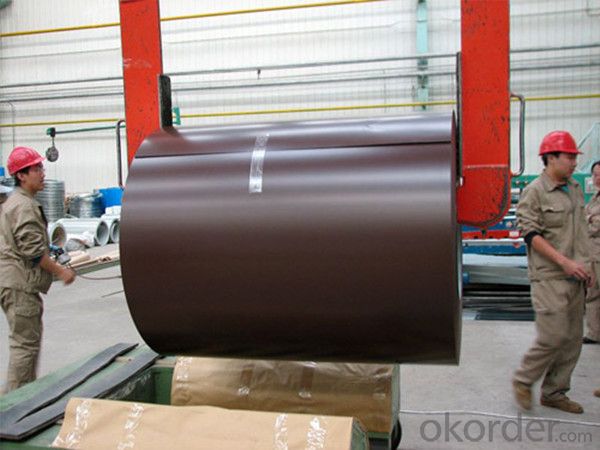
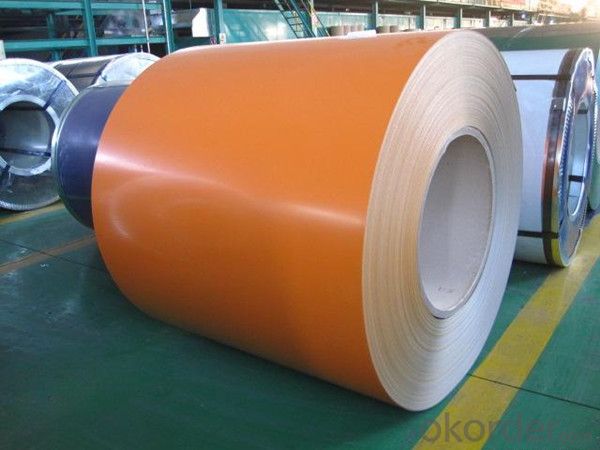
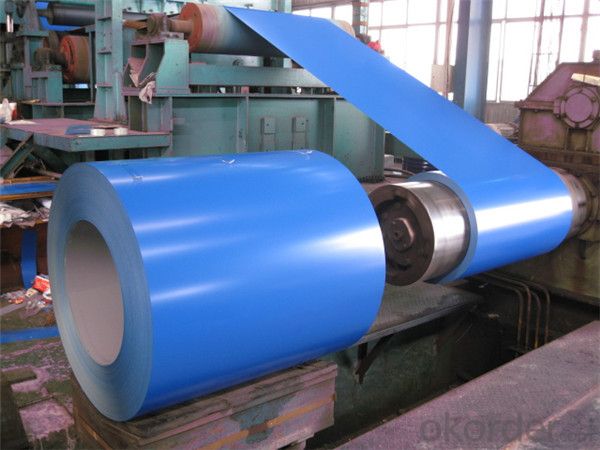
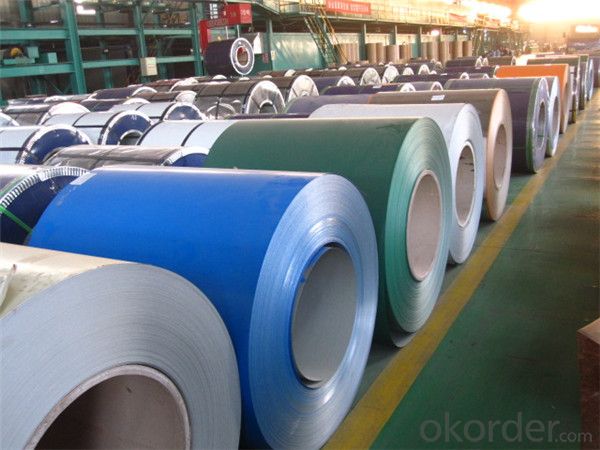
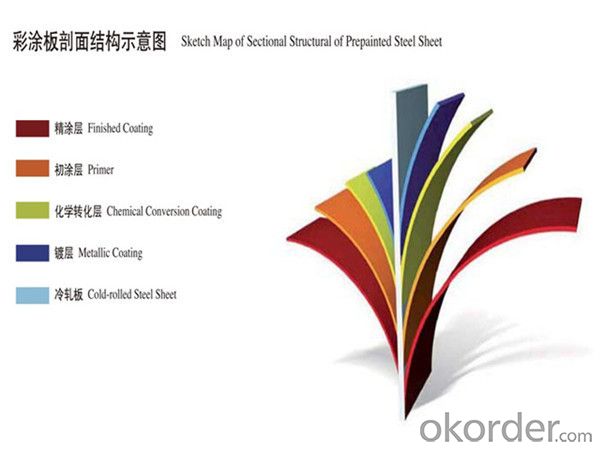
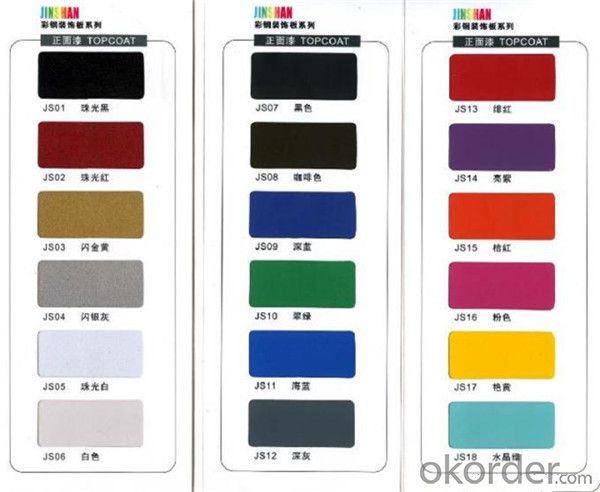
Packing:
Packaging Detail | The packing of coil consists of anti-damp paper ,PVC film ,hardboard paper , steel box , strapped with steel strips, fitted with locks and edge protectors and guarantees the optimal condition of the delivered goods. Each coil can be additionally fitted with wooden/steel skids(eye of the side) or wooden pallets(eye of the sky) |
Delivery Time | within 30 days of receipt of LC original or prepayment |
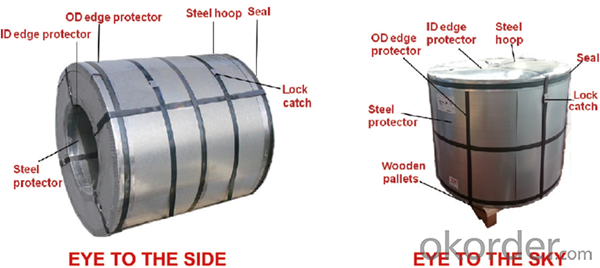
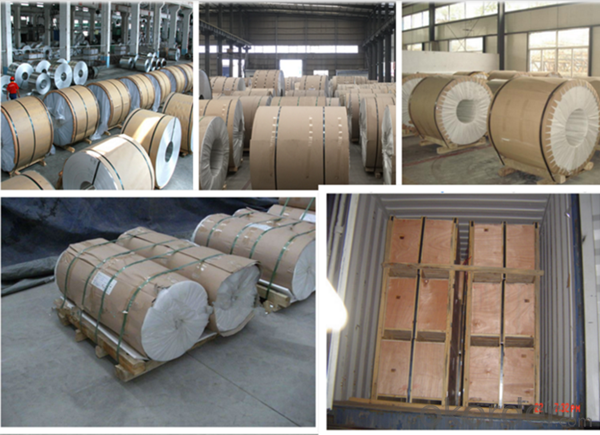
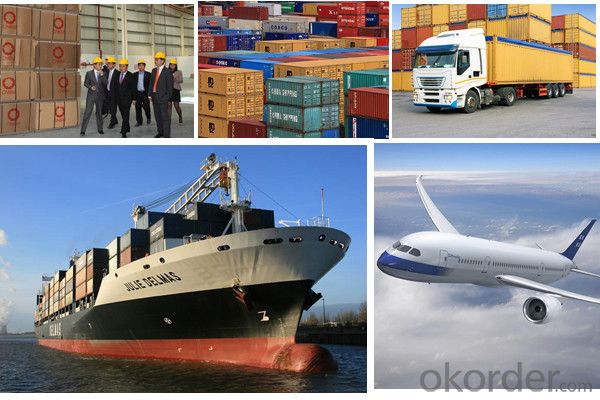
FAQ:
1. What’s the application of this product?
Roof, roof structure, surface sheet of balcony, frame of window, etc.
2. What’s the brand of the paint?
We use the best brand of all of the word—AKZO.
3. How to guarantee the quality of the products?
We have established the international advanced quality management system,every link
from raw material to final product we have strict quality test;We resolutely put an end to
unqualified products flowing into the market. At the same time, we will provide necessary
follow-up service assurance.
4. How long can we receive the product after purchase?
Usually within thirty working days after receiving buyer’s advance payment or LC. We will arrange
the factory manufacturing as soon as possible. The cargo readiness usually takes 15-25 days, but
the shipment will depend on the vessel situation
- Q: What are the different types of steel coil finishing equipment?
- Various industries utilize a range of steel coil finishing equipment to ensure that steel coils are properly prepared and finished according to the desired specifications. Some commonly used equipment includes: 1. Slitting lines, which cut large steel coils into narrower strips using multiple slitting knives at high speeds. These are commonly used in automotive, construction, and packaging industries. 2. Leveling lines, which flatten and straighten steel coils with uneven surfaces or irregularities using leveling rolls and tension control systems. These are commonly used in the manufacturing of appliances, furniture, and metal roofing. 3. Recoiling lines, which rewind steel coils into smaller coils of specific diameter and weight by carefully winding them around a mandrel. These are commonly used in electrical, HVAC, and steel distribution industries. 4. Cut-to-length lines, which cut steel coils into specific lengths as per customer requirements using precision measuring systems and hydraulic shears. These are commonly used in manufacturing, construction, and fabrication industries. 5. Coating lines, which apply protective coatings or finishes on steel coils to enhance corrosion resistance, durability, and appearance. These lines typically consist of cleaning and pre-treatment sections, followed by coating application sections. They are commonly used in automotive, appliances, and construction industries. These examples represent just a few of the available types of steel coil finishing equipment. Each type serves a specific purpose and plays a crucial role in the manufacturing and processing of steel coils for various applications.
- Q: Does anyone know the lyrics to steel driving man by Dailey and Vincent. I would really appreciate it
- watch man of steel full movie online free adf.ly/dfxYD
- Q: How are steel coils used in the production of building systems?
- Steel coils are used in the production of building systems as they provide a cost-effective and versatile material for various construction applications. These coils are often processed and shaped into different components, such as beams, columns, and roofing materials, to meet the structural requirements of buildings. The strength and durability of steel make it an ideal choice for constructing high-rise buildings, industrial facilities, and other structures that require stability and longevity.
- Q: If needed for Defence could a stainless steel sword kill someone my buddy wanted this sword for Defece after it is sharpend here is a picture
- Stainless steel only works for knives, anything past 12 inches it starts getting brittle, carbon steel is what you are looking for. As far as home defense, if you don't know how to use it, you will be worse off.
- Q: How do steel coils compare to other materials like aluminum or copper?
- Steel coils have several advantages and disadvantages when compared to other materials like aluminum or copper. One major advantage of steel coils is their strength and durability. Steel is known for its high tensile strength, which means it can withstand heavy loads and high stress without deformation. This makes steel coils ideal for applications that require strong and sturdy materials, such as construction, automotive manufacturing, and transportation industries. In comparison, aluminum and copper are generally softer and less strong than steel, making them less suitable for heavy-duty applications. Another advantage of steel coils is their cost-effectiveness. Steel is a relatively inexpensive material compared to aluminum or copper, making it a more affordable option for large-scale projects or mass production. Additionally, steel is highly recyclable, contributing to its cost-effectiveness and sustainability. However, steel coils also have some drawbacks compared to aluminum or copper. One notable disadvantage is their weight. Steel is significantly denser than aluminum or copper, which can make steel coils heavier and more challenging to handle and transport. This can be a drawback in industries where weight is a critical factor, such as aerospace or electrical applications. Another disadvantage of steel coils is their susceptibility to corrosion. While aluminum and copper are naturally corrosion-resistant, steel is prone to rust and oxidation. Therefore, steel coils need to be properly protected and coated to prevent corrosion, which adds to the overall cost and maintenance requirements. In summary, steel coils offer superior strength, durability, and cost-effectiveness compared to aluminum or copper. However, they are generally heavier and more prone to corrosion. Ultimately, the choice between steel, aluminum, or copper will depend on the specific application, budget, and requirements of the project.
- Q: What are the dimensions of steel coils used in the agricultural machinery industry?
- The specific application and requirements play a significant role in determining the dimensions of steel coils utilized in the agricultural machinery industry. Generally, the dimensions of steel coils in this industry fall between 0.5 and 2.0 millimeters in thickness and 600 to 1500 millimeters in width. These dimensions are commonly utilized for agricultural machinery components like panels, frames, brackets, and reinforcements. It is worth mentioning that these dimensions can be tailored to meet the specific needs of the machinery or the manufacturer's specifications.
- Q: What are the different methods of storing steel coils?
- There are various ways to store steel coils depending on the specific requirements and limitations of the storage facility. Some commonly used methods include: 1. Stacking: Steel coils are stacked on top of one another in a stable manner, maximizing vertical space. However, careful stacking is necessary to maintain stability and prevent damage. 2. Block stacking: Steel coils are arranged in blocks, with each coil placed directly on top of another. The blocks are then stacked to optimize space. This method provides stability and easy access to individual coils, but additional equipment may be needed to prevent damage. 3. Coil cradles: These are specialized racks or frames designed to hold steel coils horizontally. They offer support and prevent rolling or shifting, making them suitable for smaller coils or when quick access is required. 4. Coil saddles: U-shaped frames specifically designed to hold and support steel coils vertically. They are often used in conjunction with block stacking or stack storage methods, providing stability and preventing rolling or collapsing. 5. Coil racks: Steel structures designed to hold multiple coils in an organized manner. They can have multiple levels or tiers, maximizing space efficiency. Coil racks are typically used for larger coils and can be customized for specific dimensions. 6. Automated storage systems: In large-scale facilities, mechanical systems such as coil cranes or coil carousels are used to transport and store steel coils. These systems ensure efficient and fast retrieval in high-volume operations where frequent coil handling is necessary. When determining the most suitable storage method for steel coils, factors such as size, weight, accessibility, and environmental conditions should be considered. Proper handling, labeling, and regular inspections are also crucial for maintaining the integrity and longevity of the stored coils.
- Q: Ok.. I was wondering if it's possible for me to recycle baked bean cans (steel)? And if so in Western Australia (that's where I live)?I love baked beans... and I also like skateboarding, so I thought if I kept my baked bean cans, that I could get them recycled somewhere and turn it into something I could skate on (rail, etc.). I'm just curious to know if all this is possible...Cheers. :)
- Steel is one of the most recycled materials on the planet... Unless you know a recycler/steel refiner/manufacturer however, it would be mighty difficult for you to have someone melt down all your baked bean (a somewhat American dish, I'd say) cans. Plus, think how many baked beans you'd have to eat to be able to build anything of substance. Don't know where you would take it in Australia - I'm in the US where a lot of municipalities collect mixed recyclables.
- Q: How are steel coils used in the manufacturing of tools?
- Steel coils are used in the manufacturing of tools as they provide a strong and durable material that can be shaped and formed into various tool components. These coils are typically cut, bent, and shaped to create the desired tool design, and then further processed and treated to enhance their strength and performance. Additionally, steel coils are often used for tool handles, as they provide a sturdy grip and long-lasting durability.
- Q: What are the common methods of welding steel coils?
- The common methods of welding steel coils include shielded metal arc welding (SMAW), gas metal arc welding (GMAW), flux-cored arc welding (FCAW), and submerged arc welding (SAW).
Send your message to us
Prepainted galvanized steel coil hot sale
- Loading Port:
- Tianjin
- Payment Terms:
- TT OR LC
- Min Order Qty:
- 25 m.t.
- Supply Capability:
- 33576 m.t./month
OKorder Service Pledge
OKorder Financial Service
Similar products
Hot products
Hot Searches
Related keywords
